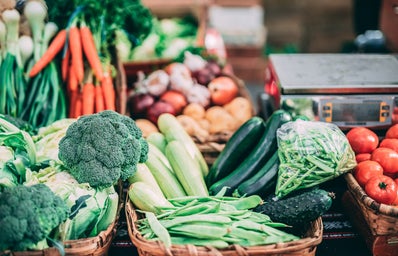As January comes to a close, so do thousands of people’s reducetarian journeys. Each year, the nonprofit campaign Veganuary sweeps the globe and convinces pledgees to try out plant-based eating for a month. In 2021, over 500,000 people joined the movement and companies even launched hundreds of new vegan products to meet the demand. As a nearly seven-year vegan, I’ve seen the cycle of Veganuary hype grow, but trendy veganism discussions tend to fizzle out by early February. If you tried out Veganuary and are considering continuing with plant-based exploration, here are some tidbits of advice to propel you further on your path:
- Clarify your motivations
-
When setting out to pursue plant-based eating beyond Veganuary, it’s essential to think through your motivations. Many friends of mine have tried out the challenge on a whim without nailing down what drew them to the movement. This type of spontaneity can fuel you for one month but probably can’t sustain a continual lifestyle shift. So, seriously ask yourself: why am I interested in reducing my intake of animal products? Is it because of your animal welfare values? Environmental concerns? Health goals? All of these reasons are important to consider. Once you identify the driving force behind your reducetarian inclinations, you will have an incentive to circle back to throughout your journey.
- Update your recipe box
-
During Veganuary, you likely tried out tons of new recipes. That’s one of the most fun parts about beginning to shift your diet! Take a walk down memory lane and rank the different meals that you tried. Maybe you discovered a latent love of tempeh or realized that nutritional yeast just isn’t for you. Note all of this great data and decide on two to three successful dishes to incorporate into your monthly meal rotation. Bookmark the recipes on your computer or print them out for safekeeping. This way, if you are ever stumped on what to cook, you’re armed with tried and true, plant-based backup plans. Pretty soon, making your staple vegan meals will become routine.
- Remember to supplement
-
As you experiment with veganism post-Veganuary, keep in mind that vitamins will be necessary to round out your diet. Cutting out animal products is a significant health decision, so consult a medical professional to find out which supplements are right for you. When I went vegan in middle school, I met with my doctor and a dietician to help me gather the vitamins necessary to keep me healthy. To this day, I have a vitamin B12 supplement and a multivitamin with iron every morning. Taking a B12 supplement will be essential if you stop eating meat long-term because you can’t naturally fulfill your needs while eating plant-based. In addition to taking supplements, I recommend trying fortified products like many soy milk options. Your health is of the utmost importance; don’t skip out on these easy, extra steps!
- Assess your grocery budget
-
Throughout Veganuary, you might’ve been able to get away with splurging on fancy imitation animal products. Yummy alternatives like Impossible burgers and fancy oat cheeses are fantastic transition foods, but, unfortunately, they can get really expensive really fast. When deciding to try reducing your animal intake over many months, swapping these treats out for budget-friendly options is a must. I recommend only buying one to two imitation products per week and largely sticking to whole, plant foods instead. Stocking up on legumes, grains, nuts and seeds will save you tons of money in the long run. Luckily, spices, herbs and aromatics are all vegan, so you can easily doll up these pantry staples to make your meals just as fun as the store-bought stuff.
- Grant yourself grace
-
Above all else, don’t be too hard on yourself. 100 people being vegan most of the time makes more of a difference than one vegan being perfect all of the time. It’s all about reducing the foods in your diet that contribute the most to factory farming, so don’t agonize over confusing ingredient labels. If your favorite bread contains some milk, it’s totally ok to still eat it while you work on reducing your overall animal product intake. Keeping those comfort foods that aren’t entirely plant-based is a valid choice that can actually be beneficial when trying to cut out more heavily animal-based foods. Just start by simplifying your reducetarian goals to the big foods like meat, eggs and stand-alone dairy products. This will make the process exponentially more manageable.
I hope that these tips are helpful to everyone considering extending Veganuary into more of a permanent reducetarian or vegan lifestyle. Remember that perfection isn’t the goal, and you should be proud of just giving plant-based eating a chance. That’s a whole lot of progress in and of itself! So, go forth and embrace every month as Veganuary.


